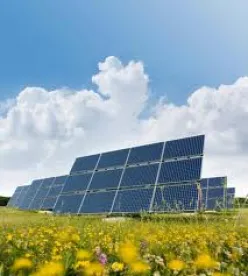In Tracer Lane II Realty, LLC v. City of Waltham, Case No. SJC-13195 (June 2, 2022), the Massachusetts Supreme Judicial Court affirmed the Land Court's holding that City officials violated state law when they determined that a road located on residentially zoned land could not be used to access a one-megawatt solar project on commercially zoned land.
The Court held that the municipality's prohibition on the use of the access road to serve the solar project violated section 3 of the Massachusetts Zoning Act, which provides that local zoning ordinances and decisions cannot "prohibit or unreasonably regulate the installation of solar energy systems or the building of structures that facilitate the collection of solar energy, except where necessary to protect the public health, safety or welfare." Mass. Gen. Laws ch. 40A, § 3. In so ruling, the Court held that where Section 3 of the Zoning Act applies to "solar energy systems" and "structures that facilitate the collection of solar energy," "we conclude that the access road is part of the solar energy system… [given] the access road's importance to the primary solar energy collection system…[in] facilitat[ing]the primary system's construction, maintenance, and connection to the electrical grid…."
The Court went a step further, observing that the City's zoning code, which allows for large-scale solar energy facilities to be developed on, at most, two percent of the City's land zoned for industrial purposes, "unduly restricts" solar energy systems that "are key to promoting solar energy in the Commonwealth." Finding that this provision of the zoning code failed to serve any legitimate purpose of protecting the public health, safety, or welfare, the Court concluded that its severe restriction on the development of large-scale solar energy "restricts rather than promotes the legislative goal of promoting solar energy" and, in so doing, violates Section 3 of the Zoning Act.
The decision is an important reminder of the role solar energy plays in achieving the Commonwealth’s state-wide clean energy goals and demonstrates the lengths to which courts will go to limit localities’ zoning efforts that hamper these goals.




 />i
/>i

